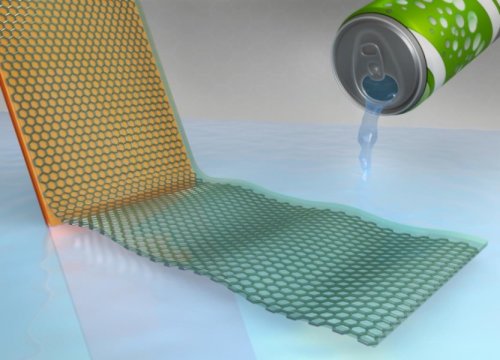Fizzy soda water could be key to clean manufacture of flat wonder material: Graphene
Whether you call it effervescent, fizzy, or sparkling, carbonated water is making a comeback as a beverage. Aside from quenching thirst, researchers at the University of Illinois at Urbana-Champaign have discovered a new use for these "bubbly" concoctions that will have major impact on the manufacturer of the world's thinnest, flattest, and one most useful materials -- graphene.
As graphene's popularity grows as an advanced "wonder" material, the speed and quality at which it can be manufactured will be paramount. With that in mind, the research group of SungWoo Nam, assistant professor of mechanical science and engineering at Illinois, has developed a cleaner and more environmentally friendly method to isolate graphene using carbon dioxide (CO2) in the form of carbonic acid as the electrolyte solution. The findings are published in the most recent Journal of Materials Chemistry C.
Nam, an expert in the area of 2D materials, is especially interested in graphene for its use in sensors or flexible devices -- for instance, a wearable patch that, when placed directly on skin, is so thin and transparent, it isn't noticeable. Nam currently has projects with industry for making wearable graphene sensors.
Graphene is synthesized by using chemical vapor deposition onto a metal substrate, typically copper foil. One particularly tricky aspect of producing graphene is how to separate this atomically thin material from its native metal substrate for integration into useful devices. This typically involves either dissolving away the high-purity metal or delaminating it from the substrate -- which require the use of harsh chemicals that leave stubborn residue. The ultra-thin graphene also needs to be coated with a polymer support layer such as polycarbonate or PMMA (poly methyl methacrylate), which requires the use of often toxic and carcinogenic solvents.

